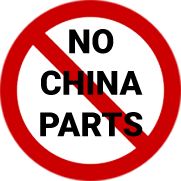What You Need to Know Safe Aircraft Landing ?
Landings are as inevitable as they are crucial to perfect. This blog will break down ten actions you can take to have a smoother and more controlled landing when you fly.
- Fly at appropriate pattern speeds. Most manufacturers have recommended speeds for their aircraft, but in case they don’t, the FAA recommends 1.4VS0 for base, and 1.3xVS0 for final.
- Avoid major power changes. If you’re making changes in power during legs of the approach pattern, you aren’t flying in a stabilized approach. Use known power settings for each leg in the pattern, and make only small corrections to ensure a stable descent.
- Your aiming point shouldn’t move in the windscreen. The spot you aim for shouldn’t change its position, up or down, and if you’re stabilized, your aiming point will be glued to one spot on your windscreen the entire time on final.
- Always know where the wind is coming from. Wind corrections are critical for every leg of the pattern, and overshooting final can easily happen due to misjudging the effect of wind on your aircraft. If you have a tailwind on base, you’ll have a higher groundspeed on base as well. The higher your groundspeed, the earlier you’ll need to start your turn, to roll out perfectly on centerline.
- Use your visual aids. If the runway has a Visual Approach Slope Indicator (VASI) or Precision Approach Path Indicator (PAPI), you can follow it for vertical guidance during your final approach.
- If you’re dealing with a crosswind, use less flaps. Full flaps is usually the preferred method for landing, but landing with less than full flaps means you will land at a higher airspeed, which makes flight controls more effective at counteracting the crosswind.
- What for the runway to zoom in size. On your final approach, the runway will steadily expand in size in your windscreen. At ten feet from the pavement, the runway will expand dramatically in front of you, marking the point that you’ll want to flare.
- During your round out, look for 3-4 centerline stripes down the runway to get an accurate sight picture. If you focus too closely in front of your aircraft during the round out, you can flare late, and if you focus too far down you can flare too early.
- Fly your plane all the way to the ground, and don’t stop when you’re a few feet above the runway. Maintain positive control all the way to the ground.
- In strong crosswinds, increase aileron deflection as you decelerate on the runway. After you touch down, you need to be careful to keep the aircraft from weathervaning in the wind. Slowly add full aileron deflection in the wind’s direction to keep your wings level, and use your rudder to keep the nose aligned with the runway.


